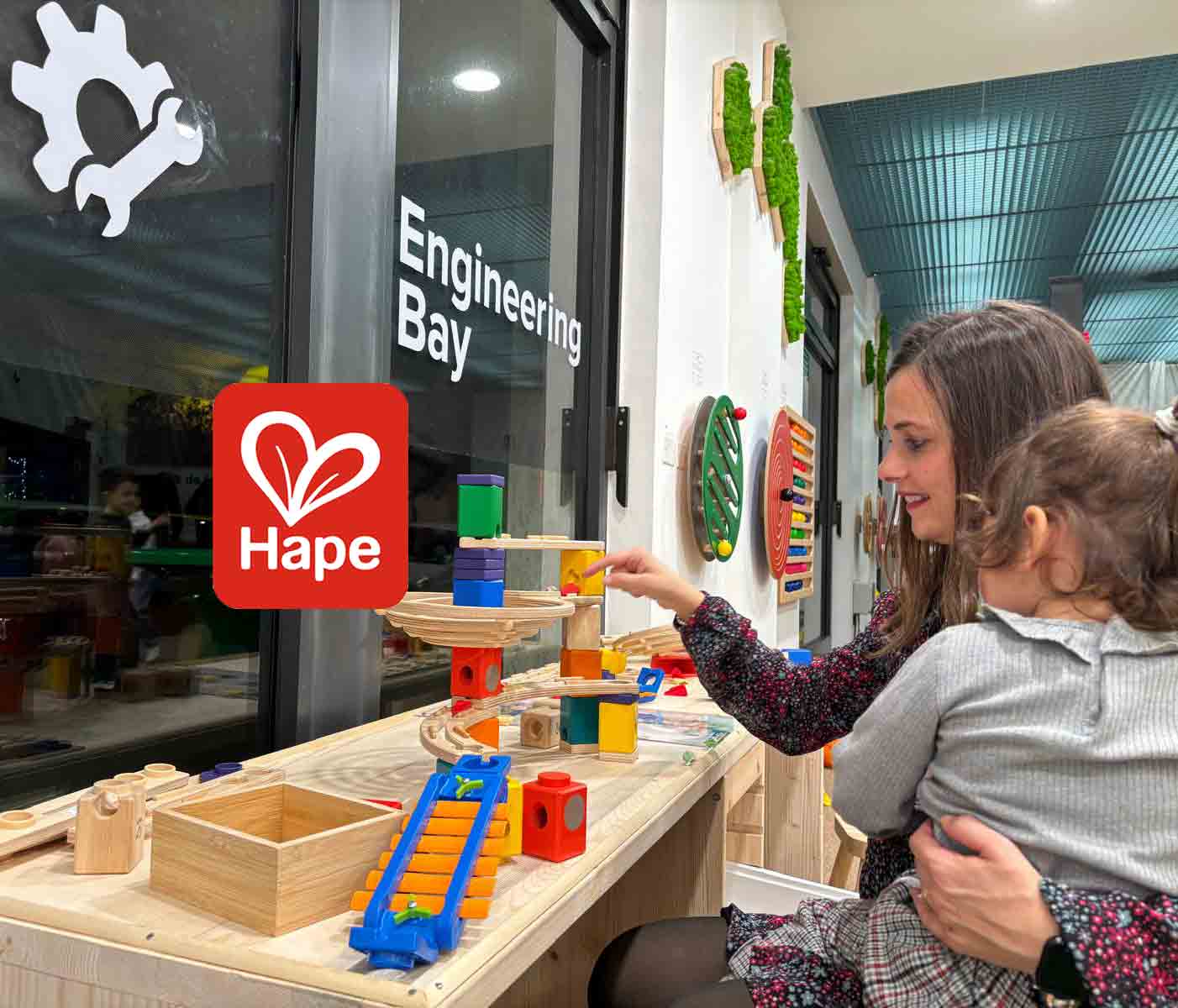As parents, we constantly look for ways to make learning engaging and meaningful for our children. With the increasing focus on STEM (Science, Technology, Engineering, and Math) education, integrating the arts into this mix creates a more comprehensive approach to teaching essential skills. Incorporating creativity with analytical thinking not only enhances children’s learning experience but also prepares them for the diverse challenges of the future. The best part is that you don’t need expensive tools or complex setups to bring STEM activities into your home. With simple materials, curiosity, and imagination, your home can transform into a lab of discovery and creativity.
Here are some of the most comprehensive and fun STEM activities you can do at home with your kids, enriching their understanding of science, engineering, technology, math, and the arts.
Kitchen Chemistry
The kitchen is a perfect space to explore chemistry, physics, and biology, and with a few common ingredients, you can create awe-inspiring experiments. Here are more ideas to get started:
Making Butter in a Jar
Transform your kitchen into a science lab by making butter in a jar. Pour heavy cream into a mason jar, tighten the lid, and have your child shake it vigorously. After a few minutes, the cream will separate into butter and buttermilk. This activity is an excellent way to explain how physical agitation can change the state of matter and introduce the concept of emulsions.
Baking Soda and Vinegar Volcano
This classic experiment never gets old! Build a small “volcano” using clay or playdough around a plastic bottle, leaving the bottle’s mouth open at the top. Fill the bottle with baking soda, and then pour vinegar into the opening. Watch as the mixture fizzes and erupts like lava flowing from a volcano. This experiment introduces children to chemical reactions, gas production, and pressure.
Egg Drop Challenge
This activity can be tied into the study of physics and engineering. Have your kids design and build a protective contraption for an egg using materials like straws, paper towels, rubber bands, and tape. Once the design is complete, drop the egg from a height and see if it survives the fall. This hands-on challenge teaches about gravity, impact, and design thinking, helping kids understand how engineers solve real-world problems.
Coding at Home
Coding is an essential skill in today’s world, and introducing children to coding through play can open up a world of possibilities. Coding doesn’t have to be overwhelming—there are plenty of simple activities and platforms for kids:
Offline Coding with a Deck of Cards
Create an offline coding game using a deck of cards. Assign each card a specific command, such as “move forward” for red cards, “turn right” for black cards, and so on. Set up a grid or obstacle course on the floor and have your child use the cards to navigate through it, issuing commands to move from start to finish. This activity helps them think like a programmer, organizing steps and logic to achieve a goal.
Scratch Coding
Introduce your child to visual programming with Scratch. On this platform, kids can create their own games, stories, and animations by dragging and dropping coding blocks. Challenge your child to create a simple game where characters collect points or solve puzzles. As they get more comfortable, encourage them to explore loops, conditional statements, and variables.
Tinkering with Robotics
If you want to take coding to the next level, consider building simple robots using kits like LEGO Mindstorms or Littlebits. These kits allow kids to program motors, sensors, and lights, combining hardware and software into fun, interactive projects. For instance, build a robot that can avoid obstacles or follow a specific path on the floor.
Engineering and Construction
Engage your child’s inner engineer with hands-on building activities that challenge them to think critically and problem-solve.
Popsicle Stick Catapult
Help your child build a simple catapult using popsicle sticks, rubber bands, and a small spoon. By experimenting with different configurations, they’ll learn about potential and kinetic energy, tension, and angles. Once their catapult is built, hold a contest to see who can launch small objects the farthest.
DIY Roller Coaster
Using paper towel tubes, tape, and marbles, challenge your kids to design and construct their own roller coaster tracks. Have them experiment with height, angles, and curves to see how fast the marble can go and if they can get it to loop. This project teaches concepts of physics, such as gravity, momentum, and friction.
Straw Bridges
Using straws and tape, challenge your children to build a bridge that can support the weight of a small object like a toy car. Encourage them to experiment with different shapes, such as triangles or arches, to see which design holds the most weight. This hands-on engineering activity introduces them to basic principles of structural engineering, such as load distribution and balance.
Blending Biology with Curiosity
Nature is full of opportunities to combine science with exploration. Encourage your child’s love of biology and environmental science with these nature-based STEM activities:
Leaf Chromatography
Show your child how to extract pigments from leaves to learn about photosynthesis and the different pigments that make leaves green. Have your child collect various leaves from different plants and then crush them into small containers with rubbing alcohol. Insert a strip of coffee filter paper into each container and observe as the pigments are separated along the paper. This activity helps children understand the chemical processes behind leaf color and photosynthesis.
Bug Observation Journal
Encourage your child to go outside and find different insects in your yard or nearby park. Give them a notebook to sketch and describe what they observe. They can note the insect’s behavior, color, and environment. This fosters observation skills and introduces them to the diversity of species in their own backyard.
Homemade Terrarium
Build a small terrarium with your child using a glass jar, soil, plants, and small stones for drainage. Let them arrange the plants and watch how the closed ecosystem functions over time. You can also introduce different types of plants, such as succulents or ferns, to compare how they thrive in the controlled environment.
Artistic Math and Geometry
Bringing math into the world of art can make abstract concepts like geometry and symmetry easier to understand. Here are some creative activities that combine art and mathematics:
Geometric String Art
With a piece of cardboard, string, and pins, your child can create beautiful geometric patterns while learning about symmetry and angles. Start by drawing a grid or circle on the cardboard and let them experiment with wrapping string around the pins in different patterns. They’ll see how changing angles and points of connection alters the design, visually demonstrating geometric principles.
Mosaic Patterns with Paper Shapes
Cut various shapes out of colored paper, such as triangles, squares, and hexagons, and encourage your child to create a mosaic design. As they arrange the shapes, you can introduce concepts of tessellation, symmetry, and angles. This hands-on activity helps kids visualize how shapes fit together and can inspire a deeper appreciation for geometry in nature and art.
Fractal Art
Introduce your kids to fractals, mathematical patterns that repeat at different scales, through art. Using paints, markers, or digital drawing tools, they can create designs that mimic natural fractals like snowflakes, trees, or coastlines. Have them start with simple shapes that they can repeat and add complexity to over time.
Solar Power and Circuitry
Teaching your children about renewable energy and circuitry can be both exciting and educational. Here are more advanced projects to further their understanding of energy and electronics:
Solar Oven
Create a solar oven out of a pizza box, aluminum foil, plastic wrap, and black construction paper. Line the inside of the pizza box with aluminum foil to reflect sunlight and place black construction paper at the bottom to absorb heat. Cover the opening with plastic wrap to trap heat. On a sunny day, try cooking something simple like s’mores in your homemade oven. This activity introduces children to the concepts of solar power and energy transfer.
Paper Circuit Greeting Cards
Combine electronics with creativity by helping your child design greeting cards that light up! Use copper tape, a coin battery, and a small LED light to create a simple circuit that powers the light when the card is opened or a button is pressed. This activity demonstrates how electricity flows through a circuit while allowing your child to create something artistic and functional.
Build a Wind Turbine
Using a small motor, some lightweight materials (such as plastic or cardboard), and a fan or natural wind, help your child design a simple wind turbine. Connect the turbine to a small light bulb or LED and watch as the wind powers the light. This project teaches children about renewable energy sources and how kinetic energy can be converted into electrical energy.
Music and Math
Music and math share a deep connection, and exploring this relationship through hands-on activities can be both educational and enjoyable:
DIY Pan Flutes
Help your child create their own pan flute using straws or pipes of varying lengths. Each pipe will produce a different pitch based on its length. Explain how sound waves travel and how the pitch is related to the length of the pipe. Have your child experiment with arranging the pipes in different sequences to create musical patterns.
Beat Counting and Fractions
Introduce your child to fractions through rhythm by teaching them how to divide beats into different note values (whole, half, quarter, etc.). Use simple percussion instruments like drums, shakers, or even clapping to demonstrate how math influences musical composition. You can also challenge them to compose rhythms that follow specific fraction patterns, reinforcing their understanding of both math and music.
Music Box Coding
If you have a music box kit, teach your child to code music by punching holes into a paper strip that the music box will play. By mapping out the notes and understanding timing, they’re essentially coding music through physical input. This activity blends creativity with precision, mirroring the logic of computer coding in a tangible, musical form.
Gardening and Nature Science
Further exploration into biology and nature science can deepen your child’s understanding of life sciences:
Water Filtration Experiment
Create a simple water filtration system using a plastic bottle, sand, gravel, and charcoal. Layer these materials in the bottle and pour dirty water through it to see how the water is purified. This project introduces the science behind water filtration and conservation, teaching kids the importance of clean water in ecosystems.
Decomposition Study
Set up a decomposition experiment by burying different organic and inorganic materials in a designated part of your garden. Let your child predict which items will break down fastest and why. Over time, have them dig up the items to observe the effects of decomposition. This activity helps kids understand the cycle of decay and how it plays a role in ecosystems.
Growing Crystals
Using household items like salt, sugar, or borax, you can help your child grow crystals over several days. Dissolve the substance in hot water, pour the solution into a jar, and suspend a string or stick in the liquid. As the solution cools, crystals will form around the string. This project introduces the concepts of molecular structure, evaporation, and how solids are formed from liquids.
Conclusion
STEM activities—combining science, technology, engineering, arts, and math—offer endless possibilities for fun and educational experiences at home. Whether you’re mixing up kitchen chemistry experiments, exploring coding through play, constructing bridges and towers, or delving into nature science, these activities foster a love of learning while developing critical thinking and creativity in children. Incorporating these projects into your routine not only helps your child build academic skills but also nurtures their curiosity, resilience, and problem-solving abilities. With these ideas, your home becomes a laboratory, studio, and classroom all in one, empowering your child to explore and grow in an engaging and meaningful way.



